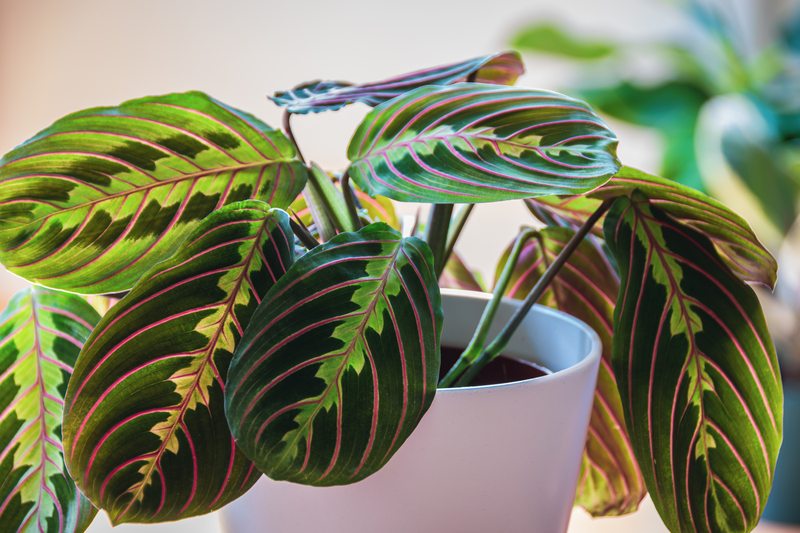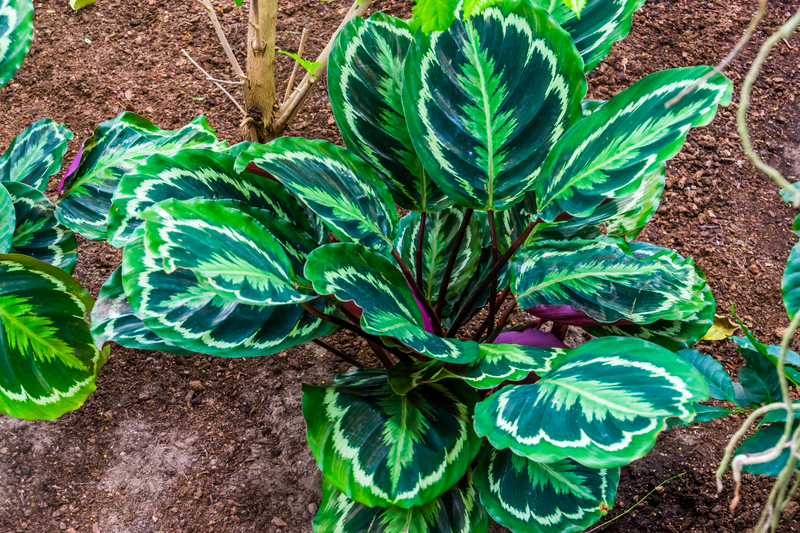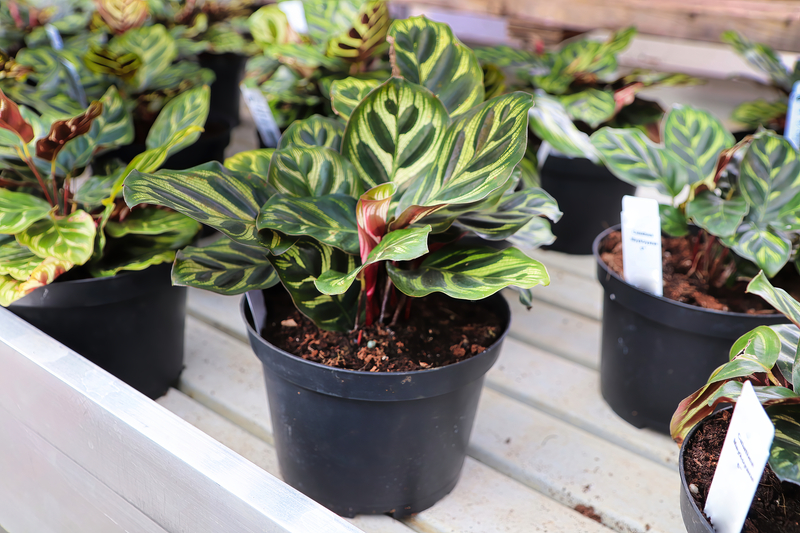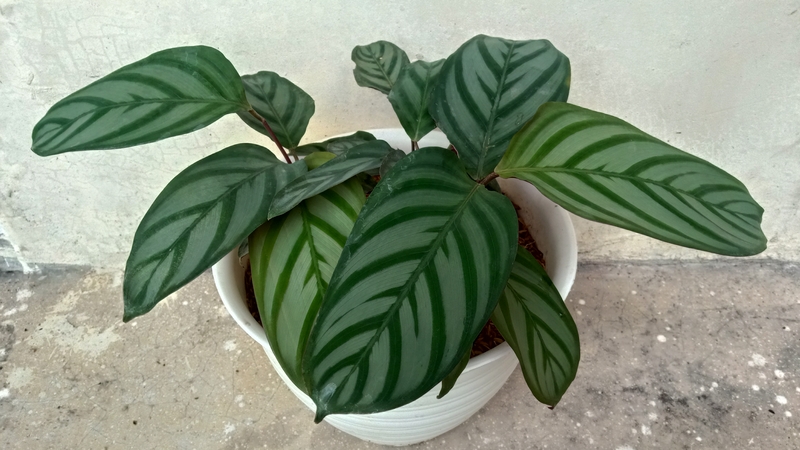Of all the houseplants you might grow, the Calathea Plant can be one of the most indoor-friendly. Its affinity for indirect light, for example, makes it ideal for many urban settings. But given that the Calathea comes from jungle conditions, is it a good match with the rest of the indoor plants you keep in your home or apartment?
We’ll address this as we talk about how to handle Calathea plant care. How do issues like repotting, potting mix, avoiding overwatering, and how can you keep your Calatheas not only living but thriving? Here’s what you’ll need to know.
Other Names
- Calathea Roseopicta
- Prayer Plant
- Cathedral Plants
- Peacock Plants
- Zebra Plants
- Rattlesnake Plants
What Types of Calathea Plants Are There?
There are many varieties of Calathea that you can choose for your home. Each with its unique look and care requirements, you have a chance to personalize this plant to suit your home needs. There are more than 35 varieties. Some include:
- Calathea Warscewiczii – A plant with deep green leaves with the lighter green running through the center.
- Calathea Makoyana – With both green and maroon variegated egg-shaped leaves.
- Calathea Crocata – This variety is best known for presenting itself with bright and colorful flowers.
What Soil Works Best for Calathea Plants?
Use standard houseplant fertilizer to give them a boost, but keep in mind that the Calathea generally does well with a simple pot of moist soil. If you repot your plants frequently, keep in mind that soil quality like this is essential.
How Much Sunlight Does a Calathea Plant Need?
Bright but not direct environments are the best for your Calathea plant. Because Calatheas grow on the jungle floors, they have shade and constant exposure to bright indirect sunlight. To mimic this jungle environment, you should use a window curtain to block the sun’s direct rays on the plant.
What Temperature Works Best for Calathea Plants?
Like many tropical plants, Calathea does best when the temperatures are between 65-80 degrees. Be careful about leaving this plant near a cold window, especially during the winter, as this can cause this plant to suffer due to the extreme cold. The same goes with leaving this plant near an AC unit during the summer.
Do Calathea Plants Enjoy Humidity?
Calatheas are native to the tropical areas of the Americas. For this reason, Calatheas need humid conditions so that a humidifier may be a good investment. You can also place this plant in the bathroom with a shower since that will be the most humid part of your home.
Another option to create humidity is with misting. Misting creates a bit of moisture as it evaporates in the air, which the plant enjoys.
How Often Should You Water Your Calathea?
Calathea plants dwell on the bottom of the jungle floor. They’ve adapted to relatively low-water environments, despite the humidity. Your ideal watering level is to avoid watering the potting soil so much that you get standing water.
Ignore conventional wisdom that more hydration is always better. For the calathea plant, that’s not the case. Less water, at least to start, is the way to go with this plant.
What Size Do Calathea Plants Grow To?
Calathea Plants are a smaller variety that will mature at a few feet in height. Generally speaking, these plants will be anywhere between 6 inches and 2-3 feet tall. This height makes this plant perfect to place on a windowsill or table in your home since it does not take up too much space.
Most Common Bugs
Calathea plants run into common pests like mealybugs, fungus gnats, and spider mites like most houseplants. However, you can treat these with natural pesticides like neem oil.
Most Common Diseases
Root rot is a common disease for calathea plants due to overwatering. If root rot occurs, you need to replace the pot with fresh soil, clean off the roots, and place the plant in a dry area in your home. After a few days in the new environment, you can introduce the plant to its usual water regime.
How Often Should You Repot Calathea Plants?
Since the Calathea isn’t a large grower, you won’t have to worry about repotting into bigger pots all too often. Instead, you’ll be able to get away with repotting every few years to help replenish the plant soil.
Can You Propagate a Calathea Plant?
You can propagate a calathea plant, and the best time is when you decide to repot the plant completely. To propagate the plant, you place the new cuttings of the plant in fresh soil and give it as much humidity as possible. Give it a few weeks, and you should see the plant begin to grow big and beautiful in your home.
Why Do Calathea Leaves Turn Brown?
Your calathea plant is unfamiliar to ordinary tap water containing fluoride and other substances. Therefore, when the mineral content of your soil gets too high, it has the potential to affect your calathea plant. For example, it can turn the leaves brown or potentially cause them to curl.
To decrease the chances of brown leaves, you can use rainwater or filtered water. Rainwater or filter water will help simulate the Calatha’s natural environment during the growing season.
Conclusion – How to Take Care of Calathea Plants
In summary, a calathea plant does best in a humid environment with infrequent watering. The plant doesn’t grow too big, which is helpful to know for any plant owner. Also, the plant is relatively easy to propagate, which means you can add more of these plants around your home!
Similar Posts:
How to Take Care of a Coffee Plant
How to Take Care of a Palm Plant
How to Take Care of a Spider Plant
How to Take Care of a Pothos Plant
How to Take Care of a Daisy Plant




